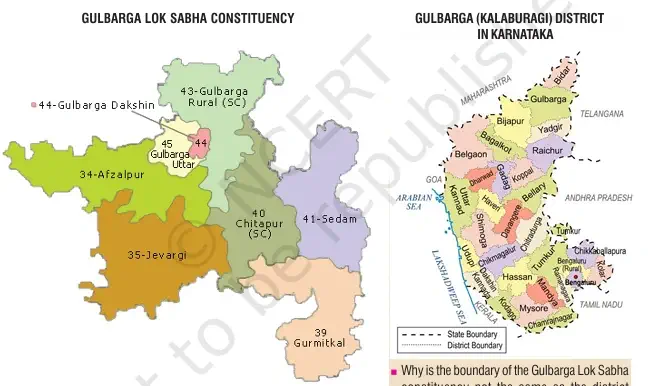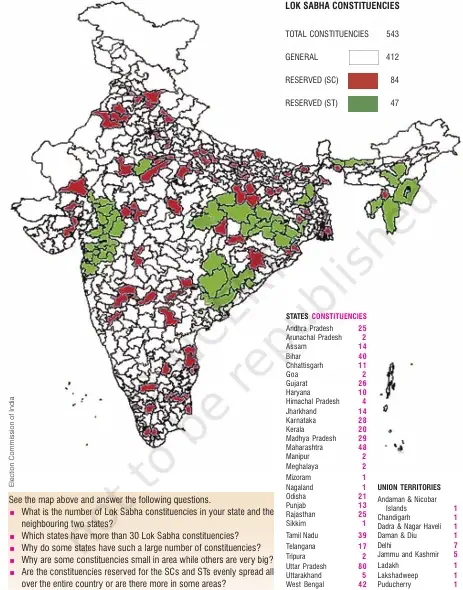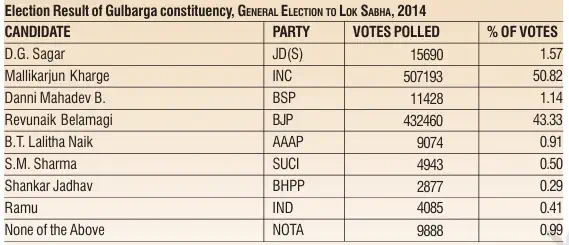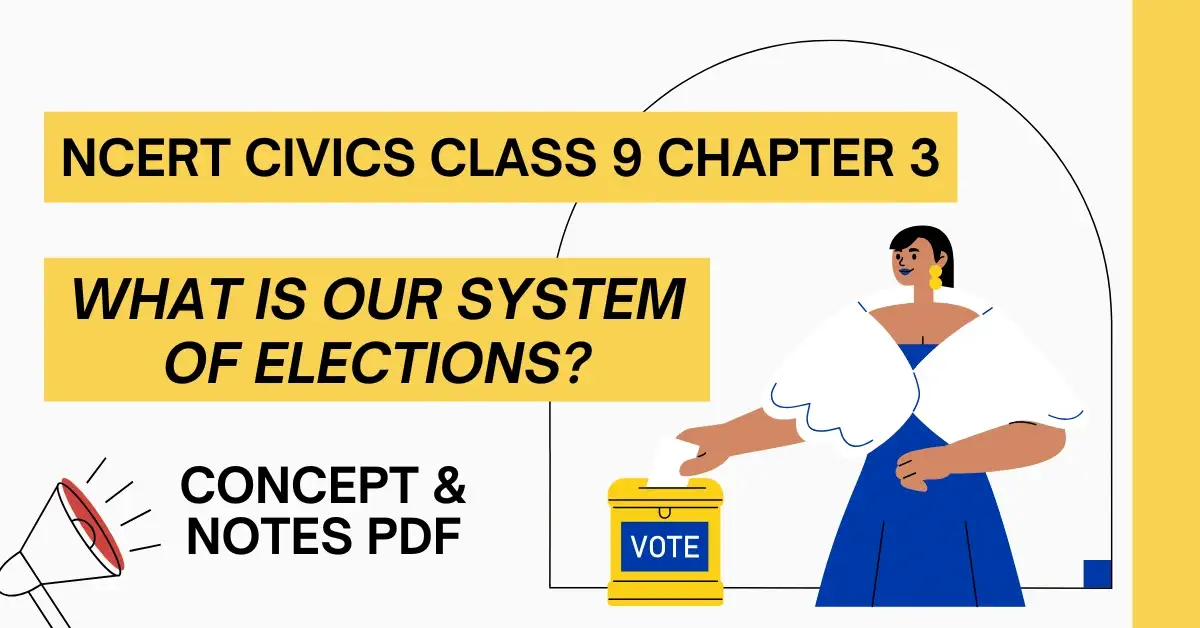What Is Our System Of Elections Class 9 – Concept & Notes PDF for Free
Topic covered: What Is Our System Of Elections class 9 notes and MCQs Questions: Electoral Politics (All single detail notes are exam-oriented).
We have discussed in-depth and exam-oriented pointers that can be asked in the board exam of class 9th about the “What Is Our System Of Elections?“ from the NCERT Political Science (Civics) notes for class 9th chapter 3 Electoral Politics.
Download the NCERT Political Science (Civics) for Class 9th Chapter 3 Electoral Politics Notes PDF
Download the NCERT Political Science (Civics) for Class 9th Chapter 3 Electoral Politics Notes PDF to get clear and reliable study material for your exams. These notes explain the concept of elections, their role in democracy, and how representatives are chosen in a simple and organized manner. Designed for Class 9 students, the notes cover all important topics and definitions from the chapter, making revision easier and faster. With this PDF, you can prepare step by step, understand key terms, and practice for your board exams with confidence. It’s a handy resource for quick learning and effective preparation.
What Is Our System Of Elections?
1. Regularity of Elections in India:
- Lok Sabha and Vidhan Sabha elections are held every five years.
- After five years, the term of elected representatives ends.
- At this point, the Lok Sabha or Vidhan Sabha stands dissolved.
2. Types of Elections:
- General Election:
- Held in all constituencies at the same time.
- Can take place on the same day or within a few days.
- By-Election:
- Conducted in one constituency only.
- Takes place when a seat becomes vacant due to death or resignation of a member.
3. Focus of the Chapter:
- Special emphasis is placed on understanding general elections in India.
Electoral Constituencies

1. Meaning of Electoral Constituencies:
- India follows an area-based system of representation.
- The country is divided into electoral constituencies for elections.
- Voters in one area elect one representative.
2. Lok Sabha Constituencies:
- The country is divided into 543 Lok Sabha constituencies.
- Each constituency elects one Member of Parliament (MP).
- Equal value of every vote is ensured by keeping the population in each constituency roughly equal.
3. State Assembly Constituencies:
- Each state is divided into Assembly constituencies.
- Each constituency elects a Member of Legislative Assembly (MLA).
- Each Parliamentary constituency contains several Assembly constituencies.
4. Local Body Constituencies:
- For Panchayat and Municipal elections, villages and towns are divided into wards.
- Each ward elects one member of the village or urban local body.
5. Constituencies as Seats:
- A constituency is often referred to as a seat.
- Example: When Lok Dal won 60 seats in Haryana, it means Lok Dal won in 60 Assembly constituencies, giving it 60 MLAs in the State Assembly.
Reserved Constituencies

1. Constitutional Rights in Elections:
- Every citizen has the right to elect representatives and contest elections.
2. Concern for Weaker Sections:
- Constitution makers feared that weaker sections (like SCs and STs) might not get elected in open competition.
- Reasons: lack of resources, education, and contacts.
- Influence of powerful groups could prevent their success.
- Without their voice, democracy would become less representative and less democratic.
3. System of Reserved Constituencies:
- Special provision of reserved constituencies introduced.
- SC Reserved Constituency: only Scheduled Caste candidates can contest.
- ST Reserved Constituency: only Scheduled Tribe candidates can contest.
4. Current Reservation in Lok Sabha (as of 26 January 2019):
- 84 seats reserved for Scheduled Castes.
- 47 seats reserved for Scheduled Tribes.
- Reservation is proportional to their population share, so it does not reduce others’ legitimate share.
5. Extension to Other Levels:
- Reservation system extended to district and local levels.
- Seats reserved for Other Backward Classes (OBCs) in many states.
- Proportion of reserved seats for OBCs varies from state to state.
6. Reservation for Women:
- One-third of seats in rural and urban local bodies are reserved for women candidates.
Voters’ List
1. Meaning of Voters’ List:
- After constituencies are decided, the next step is to prepare the list of eligible voters.
- This list is officially called the Electoral Roll and commonly known as the Voters’ List.
2. Importance of Voters’ List:
- Prepared much before the election and given to everyone.
- Ensures the first condition of democratic election: equal opportunity for all to choose representatives.
- Based on the principle of universal adult franchise:
- Every person should have one vote.
- Every vote should have equal value.
3. Right to Vote in India:
- In India, all citizens aged 18 years and above can vote.
- Right to vote is given to all citizens irrespective of caste, religion, or gender.
- Some exceptions: criminals and persons with unsound mind can be denied voting rights (in rare cases).
4. Government’s Responsibility:
- Add names of all eligible voters to the list.
- New voters (turning 18) are added.
- Names of dead persons or those who moved out are deleted.
- A complete revision of the voters’ list is done every 5 years to keep it updated.
5. Election Photo Identity Card (EPIC):
- Introduced in recent years to prevent bogus voting.
- Every person on voters’ list is given an EPIC card.
- Voters should carry the card while voting so that no one votes in their place.
- Not compulsory – other identity proofs (ration card, driving licence, etc.) are also accepted.
Nomination of Candidates
1. Nomination of Candidates:
- In a democracy, people should have a real choice of candidates.
- There are almost no restrictions on contesting elections.
- Anyone who can be a voter can also become a candidate.
- Minimum age to be a voter: 18 years.
- Minimum age to be a candidate: 25 years.
- Some restrictions exist for criminals, but only in extreme cases.
- Political parties nominate candidates, who then get the party symbol and support.
- Party nomination is often called a party ticket.
- To contest, a person must:
- Fill a nomination form.
- Submit a security deposit.
2. Legal Declaration of Candidates:
- A new system of declaration was introduced by the Supreme Court.
- Every candidate must publicly declare:
- Serious criminal cases pending against them.
- Assets and liabilities of self and family.
- Educational qualifications.
- This declaration gives voters a chance to make informed choices.
3. Educational Qualifications for Candidates:
- No educational qualification is required to contest elections.
- Different jobs require different qualifications.
- Example: For cricket, skill in cricket is the qualification, not a degree.
- Relevant qualification for an MLA/MP is:
- Ability to understand people’s concerns.
- Ability to represent people’s interests.
- Voters decide candidates’ capability once every five years.
- If education was made compulsory:
- Majority of citizens would lose the right to contest elections.
- Example: If graduation was compulsory (BA, B.Com, B.Sc), over 90% of citizens would be ineligible.
- Such a rule would go against the spirit of democracy.
Election Campaign
1. Purpose of Election Campaign:
- Elections allow people to choose representatives, government, and policies.
- A free and open discussion is necessary to decide:
- Who is the better representative.
- Which party will form a better government.
- What policies are good for the people.
- This discussion happens during election campaigns.
2. Duration and Activities of Campaign:
- In India, campaigns officially run for two weeks between:
- Announcement of final list of candidates.
- Date of polling.
- During campaigns:
- Candidates contact voters.
- Leaders address public meetings.
- Parties mobilize supporters.
- Newspapers and TV carry election-related debates and news.
- Parties begin preparing months in advance, not just during these two weeks.
3. Focus of Election Campaigns:
- Parties highlight big issues to attract public support.
- Aim is to focus attention on specific promises and gain votes.
4. Examples of Famous Election Slogans:
- 1971 Lok Sabha (Congress – Indira Gandhi): Garibi Hatao (Remove poverty).
- 1977 Lok Sabha (Janata Party – Jayaprakash Narayan): Save Democracy.
- 1977 West Bengal Assembly (Left Front): Land to the Tiller.
- 1983 Andhra Pradesh Assembly (Telugu Desam Party – N. T. Rama Rao): Protect the Self-Respect of the Telugus.
5. Regulation of Election Campaigns (Election Law):
- No party or candidate can:
- Bribe or threaten voters.
- Appeal to voters on caste or religion.
- Use government resources for campaigning.
- Spend more than:
- ₹25 lakh in a Lok Sabha constituency.
- ₹10 lakh in an Assembly constituency.
- If these rules are broken, the court can cancel their election, even after results.
6. Model Code of Conduct (Agreed by All Parties):
- No party or candidate can:
- Use places of worship for propaganda.
- Use government vehicles, aircrafts, or officials for campaigning.
- Once elections are announced, Ministers cannot:
- Lay foundation stones for projects.
- Take major policy decisions.
- Promise public facilities.
Polling and Counting of Votes
1. Polling Process:
- The final stage of an election is called polling or election day.
- Every person on the voters’ list can vote at a nearby polling booth, usually in a school or government office.
- Inside the booth:
- Election officials identify the voter.
- A mark is put on the voter’s finger.
- The voter is allowed to cast their vote.
- An agent of each candidate is present in the booth to ensure fair voting.
2. Ballot Paper and EVMs:
- Earlier, voting was done using a ballot paper with candidate names, party names, and symbols.
- Now, Electronic Voting Machines (EVMs) are used.
- EVMs display candidate names and symbols, including independent candidates’ symbols allotted by the Election Commission.
- The voter presses the button against the chosen candidate’s name.
3. Counting of Votes:
- After polling, EVMs are sealed and kept in a secure place.
- On a fixed date, EVMs are opened and votes are counted.
- Agents of candidates remain present during counting to ensure fairness.
- Candidate with the highest number of votes is declared elected.
- In a general election, counting across constituencies happens at the same time, on the same day.
- Results are announced within a few hours by TV, radio, and newspapers.
- The results show which party will form the next government.
4. Expenditure on Elections:
- Elections in India involve huge expenditure.
- In 2014 Lok Sabha elections:
- Government spent about ₹3,500 crores (~₹40 per voter).
- Parties and candidates spent even more.
- Combined expenditure (government + parties + candidates) was about ₹30,000 crores (~₹500 per voter).
- Critics argue elections are too costly for a poor country like India.
- Comparison:
- 6 French submarines (2005) → ₹3,000 crores each.
- Commonwealth Games (Delhi, 2010) → ₹20,000 crores.
- Debate: Are elections too expensive, or is the cost justified for democracy?
5. Example: Election Result in Gulbarga (2014):

- Total candidates: 8.
- Total eligible voters: 17.21 lakh.
- Total votes polled: 9.98 lakh.
- Congress candidate Mallikarjun Kharge won with 5.07 lakh votes (50.82%).
- Since he got the highest votes, he was declared MP from Gulbarga Lok Sabha constituency.
Next & Previous Topics of NCERT/CBSE Political Science (Civics) Class 9 Chapter 3: Electoral Politics
| Topics No. | Topics Name |
|---|---|
| 1 | Why Elections? |
| 2 | What Is Our System Of Elections? |
| 3 | What Makes Elections In India Democratic? |
MCQs on NCERT Political Science (Civics) Class 9 Chapter 3 Topic – What Is Our System Of Elections Class 9 Notes
Here are the top exam-oriented MCQ-type questions on “What Is Our System Of Elections Class 9 Notes” that you should prepare for your CBSE or state board exams:
Question 1. Elections held in all constituencies at the same time, either on the same day or within a few days, are called:
a) Mid-term elections
b) By-elections
c) General elections
d) Local elections
Answer: c) General elections
Question 2. Elections held to fill the vacancy caused by death or resignation of a member are called:
a) General elections
b) By-elections
c) Presidential elections
d) Mid-term polls
Answer: b) By-elections
Question 3. For Lok Sabha elections, India is divided into how many constituencies?
a) 543
b) 545
c) 552
d) 560
Answer: a) 543
Question 4. The representative elected from each Lok Sabha constituency is called:
a) MLA
b) MP
c) Councillor
d) Ward Member
Answer: b) MP
Question 5. For Assembly elections, representatives are called:
a) Ward members
b) MPs
c) MLAs
d) Ministers
Answer: c) MLAs
Question 6. Why does the Constitution require each constituency to have roughly equal population?
a) To ensure fairness
b) To maintain secrecy
c) To reduce expenses
d) To prevent candidates from contesting
Answer: a) To ensure fairness
Question 7. Seats are reserved in Lok Sabha and State Assemblies for:
a) OBC and minorities
b) SC and ST
c) Farmers and workers
d) Women only
Answer: b) SC and ST
Question 8. As of 26 January 2019, how many Lok Sabha seats are reserved for SCs?
a) 84
b) 47
c) 60
d) 100
Answer: a) 84
Question 9. As of 2019, how many Lok Sabha seats are reserved for STs?
a) 84
b) 47
c) 60
d) 75
Answer: b) 47
Question 10. One-third of the seats in rural and urban local bodies are reserved for:
a) SCs
b) STs
c) OBCs
d) Women
Answer: d) Women
Question 11. The official name of the voters’ list is:
a) Voting Register
b) Electoral Roll
c) Ballot List
d) Polling Register
Answer: b) Electoral Roll
Question 12. In India, the minimum age required to vote is:
a) 16 years
b) 18 years
c) 21 years
d) 25 years
Answer: b) 18 years
Question 13. Which of the following can be denied voting rights?
a) Women
b) Poor citizens
c) Persons with unsound mind
d) Illiterate persons
Answer: c) Persons with unsound mind
Question 14. Which card has been introduced to prevent impersonation of voters?
a) Aadhaar Card
b) Ration Card
c) EPIC (Election Photo Identity Card)
d) Driving Licence
Answer: c) EPIC
Question 15. The minimum age to contest elections in India is:
a) 18 years
b) 21 years
c) 25 years
d) 30 years
Answer: c) 25 years
Question 16. Party nomination is often called:
a) Party ticket
b) Party card
c) Party roll
d) Party pass
Answer: a) Party ticket
Question 17. Which of the following details must candidates declare?
i) Criminal cases
ii) Assets and liabilities
iii) Educational qualifications
a) Only i and ii
b) Only ii and iii
c) Only i and iii
d) All of the above
Answer: d) All of the above
Question 18. Why is there no educational qualification for contesting elections in India?
a) To encourage illiteracy
b) To keep politics simple
c) To prevent majority from being disqualified
d) To reduce election expenses
Answer: c) To prevent majority from being disqualified
Question 19. Who examines whether an elected representative has the ability to serve people?
a) Election Commission
b) Judiciary
c) Voters
d) Parliament
Answer: c) Voters
Question 20. The election campaign period in India lasts for:
a) 10 days
b) 14 days
c) 20 days
d) 30 days
Answer: b) 14 days
Question 21. “Garibi Hatao” slogan was given by:
a) Jayaprakash Narayan
b) Indira Gandhi
c) N.T. Rama Rao
d) Left Front
Answer: b) Indira Gandhi
Question 22. “Save Democracy” slogan was given by:
a) Indira Gandhi
b) Jayaprakash Narayan
c) N.T. Rama Rao
d) Lok Dal
Answer: b) Jayaprakash Narayan
Question 23. “Land to the Tiller” slogan was used by:
a) Telugu Desam Party
b) Left Front
c) Lok Dal
d) Congress
Answer: b) Left Front
Question 24. “Protect the Self-Respect of the Telugus” slogan was given by:
a) Indira Gandhi
b) N.T. Rama Rao
c) Jayaprakash Narayan
d) Charan Singh
Answer: b) N.T. Rama Rao
Question 25. According to law, maximum expenditure allowed for Lok Sabha election in a constituency is:
a) ₹10 lakh
b) ₹25 lakh
c) ₹40 lakh
d) ₹50 lakh
Answer: b) ₹25 lakh
Question 26. According to law, maximum expenditure allowed for Assembly election in a constituency is:
a) ₹10 lakh
b) ₹25 lakh
c) ₹15 lakh
d) ₹20 lakh
Answer: a) ₹10 lakh
Question 27. Which of the following is prohibited during campaigns?
a) Bribing voters
b) Appealing on caste or religion
c) Using government resources
d) All of the above
Answer: d) All of the above
Question 28. Earlier, voting in India was done through:
a) EVMs
b) Ballot papers
c) Online voting
d) Postal ballot only
Answer: b) Ballot papers
Question 29. Nowadays, voting in India is recorded by:
a) Ballot papers
b) Postal votes only
c) Electronic Voting Machines (EVMs)
d) Mobile apps
Answer: c) Electronic Voting Machines (EVMs)
Question 30. The candidate who is declared elected is the one who:
a) Secures more than 50% votes
b) Secures highest number of votes
c) Is selected by Election Commission
d) Is nominated by President
Answer: b) Secures highest number of votes
Question 31. Approximate cost of conducting Lok Sabha elections in 2014 was:
a) ₹2,000 crores
b) ₹3,500 crores
c) ₹20,000 crores
d) ₹30,000 crores
Answer: b) ₹3,500 crores
Question 32. Roughly, total expenditure made by government, parties and candidates in 2014 elections was:
a) ₹3,500 crores
b) ₹10,000 crores
c) ₹30,000 crores
d) ₹50,000 crores
Answer: c) ₹30,000 crores

